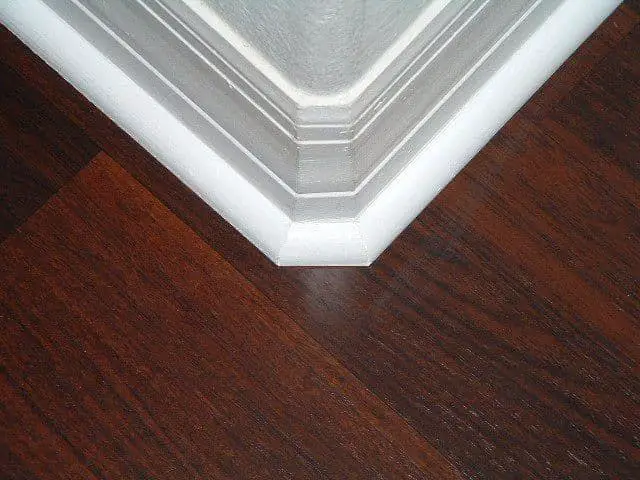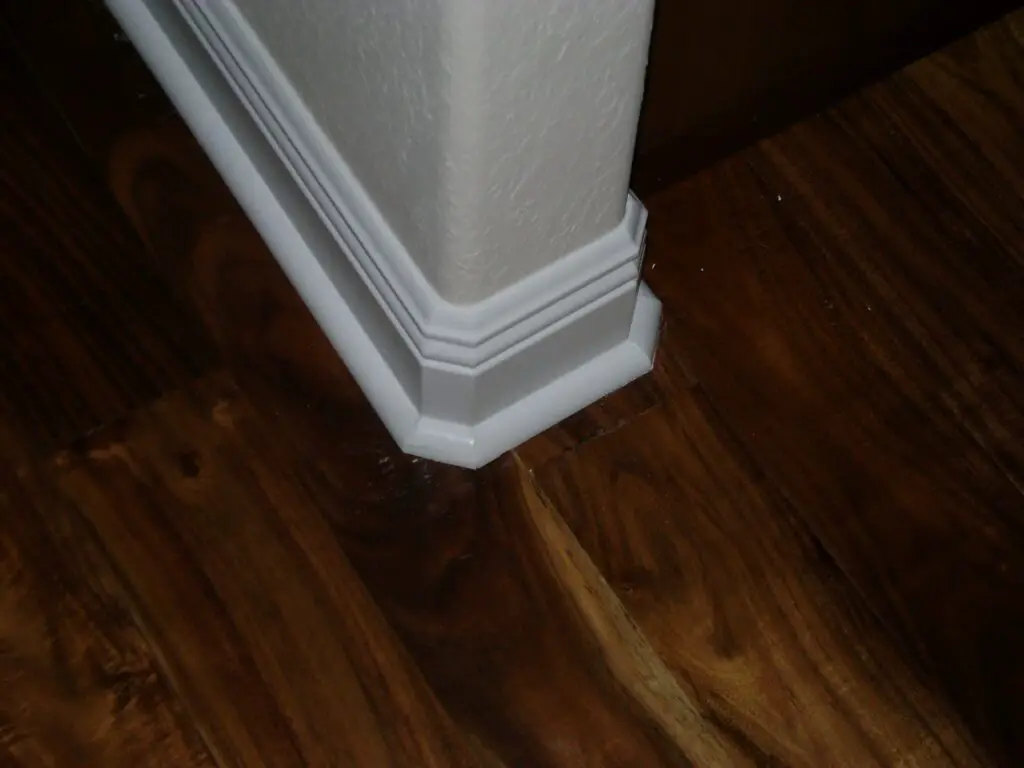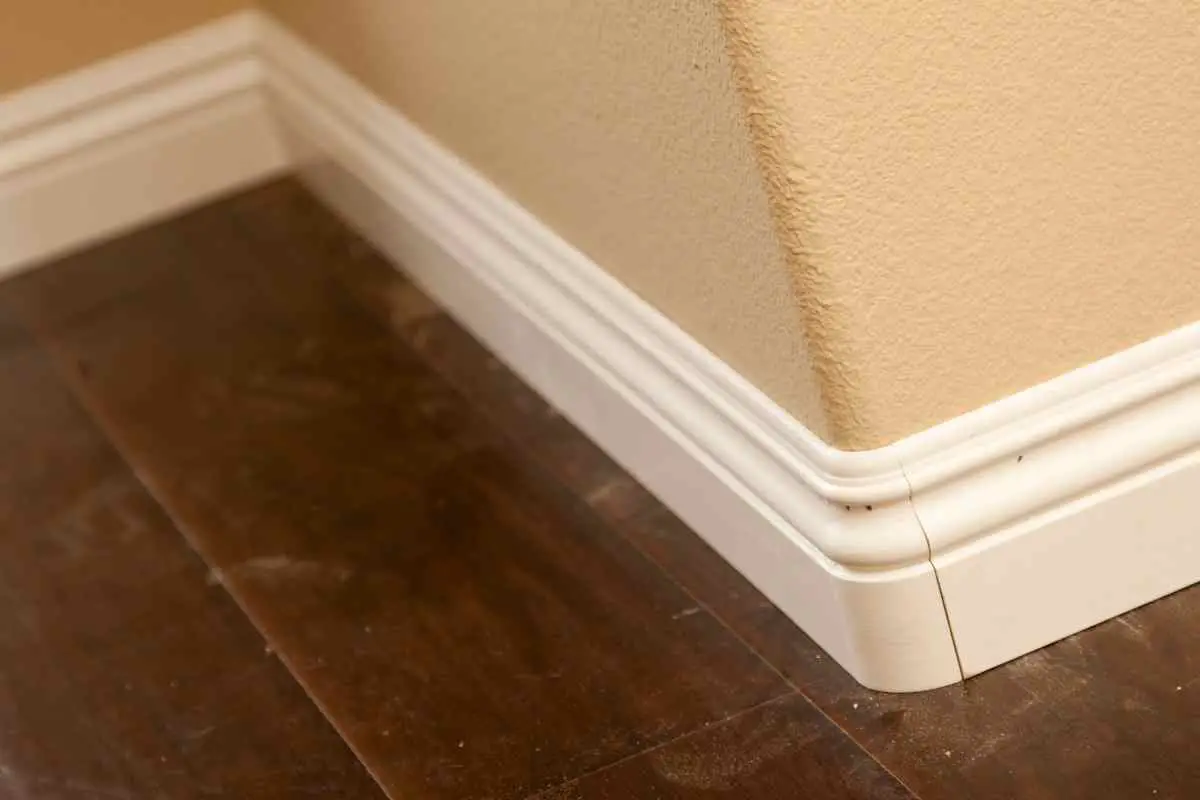How To Cut Baseboard Corners
Introduction
How To Cut Baseboard Corners: If you prefer a more advanced technique for inside corners, you can use a coping saw to create a cope joint. This method involves cutting the second piece of baseboard straight at a 90-degree angle and then using the coping saw to remove the profile of the first piece where they meet. This allows for a tighter fit and a cleaner appearance. Next, we’ll delve into the two main types of corners you’ll encounter: inside corners and outside corners.
Each requires slightly different cutting techniques, and we’ll walk you through the process step-by-step, complete with helpful tips to avoid common pitfalls. Additionally, we’ll introduce you to an advanced technique called coping, ideal for inside kitchen base corners, which allows for an even tighter fit and seamless joints. You’ll gain insights into when and how to use this method to elevate your baseboard installation to the next level.
Safety is a top priority, and we’ll remind you to wear protective gear and exercise caution throughout the cutting process. Additionally, we’ll provide troubleshooting tips and offer solutions to common challenges that may arise during your baseboard corner-cutting journey. Whether you’re renovating your home, revamping a room, or embarking on a DIY project, mastering the art of cutting baseboard corners will undoubtedly be a valuable addition to your skillset.

What tool to use to cut baseboard?
Bevel cut the end 45° with a miter saw. Cut to reveal baseboard profile. The profile with coping saw. Cut away from the baseboard’s backside with a slight slant.
Baseboards with a miter box and hand saw if you’re on a budget or like a traditional method. The compact, lightweight miter box supports the baseboard and guides the hand saw to produce perfect cuts at predetermined angles.
Coping saws are useful for inside corners where two baseboards meet at an angle. Coping creates a smooth junction by trimming one baseboard to fit snugly against the other.
A circular saw with a fine-toothed blade can replace a miter saw for straight cuts on longer baseboards.
Safety is paramount while using any cutting tool. Protect yourself from debris and noise with safety eyewear and ear protection. Follow manufacturer directions and take steps to avoid accidents and injury.
Choosing the appropriate baseboard cutting equipment is crucial for good woodworking output. If precision and efficiency matter, use a miter saw. However, m
What are the angles for baseboards?
Set the Saw Angle
Inside corners occur when two walls meet at an angle less than 180 degrees, typically forming a concave shape. In these situations, baseboards are cut at 45-degree angles to fit seamlessly against each other. The miter joint created at the corner results in a clean and tight fit.
Outside corners occur when two walls meet at an angle greater than 180 degrees, forming a convex shape. For outside corners, baseboards are also cut at 45-degree angles. The resulting miter joint ensures that the baseboards meet neatly at the corner, leaving no gaps.
In some cases, coping is used instead of mitering for inside corners. Coping involves cutting the profile of one baseboard to match the contour of the other baseboard. This creates a tight fit and a seamless joint, even in situations where the corners are not precisely 45-degree angles. Coping is particularly useful when walls are uneven or not perfectly square.
Occasionally, you may encounter non-standard angles for baseboards due to irregularly shaped rooms or unique architectural features. When facing such scenarios, you’ll need to measure the angle using an angle finder or a digital protractor and adjust the miter saw accordingly to make accurate cuts.
What blade is best for cutting baseboards?
While miter saws are great for cutting baseboards, their blades are frequently not built for trim work. Many pros switch to 60-tooth blades.
A fine-toothed carbide-tipped blade is ideal for cutting wood or MDF baseboards. These blades contain 60–100 teeth and cut smoothly without splintering or cracking wood.
A crosscutting/ripping combo blade is multipurpose. Ripping and crosscutting teeth are mixed together. It cuts wood baseboards well, but not as smoothly as a fine-toothed blade.
The crosscutting blade is designed to cut cleanly across the wood grain. It may not be ideal for cutting baseboards, but it can work well with a miter saw.
A fine-toothed carbide-tipped blade is best for cutting wood or MDF baseboards cleanly and precisely. Professional-quality finish with little splintering and peeling. Consider specialist blades for laminates and non-ferrous metals.
Always check the blade’s compatibility with your miter saw or circular saw and follow the manufacturer’s safety instructions.
Is trim the same as the baseboard?
The Difference Between Baseboard and Trim, for Finish Carpentry: Baseboard is the wood (or other material) board that runs between the floor and the wall. It usually is between 3”-8” and comes in a variety of materials and profiles. Trim is a broad term that encompasses baseboard and other trim throughout the home.
Baseboard, also known as base or skirting board, is a type of molding installed at the bottom of interior walls where they meet the floor. Its primary function is to cover the joint between the wall and the floor, providing a neat and finished appearance.
Baseboards protect the lower portion of the wall from damage caused by foot traffic, vacuum cleaners, and furniture. Additionally, baseboards can help hide minor imperfections in the wall-floor junction.
Baseboards come in various styles and sizes, allowing homeowners to choose the one that best complements the room’s decor. They are typically made of wood, MDF (Medium-Density Fiberboard), PVC, or other materials that are durable and can be painted or stained to match the interior design.
Trim refers to a broad category of decorative moldings and millwork used to enhance the appearance of various architectural elements in a room. It includes various types of molding, such as crown molding, casing, chair rail, and more. Trim is often used to add decorative details to doors, windows, ceilings, and walls, transforming plain surfaces into visually appealing focal points.
While baseboard is considered a type of trim because it falls under the category of moldings, not all trim elements are baseboards.
Baseboards come in a relatively limited range of styles and sizes since they are designed specifically for the bottom of walls. Trim, however, encompasses a wide variety of moldings, each with its unique design and application.
What is the best blade to cut MDF baseboard?
Cutting MDF and man-made materials: Use a 50-tooth to 80-tooth blade. 60-tooth and up blades often make better cuts in dense materials. Plastic laminate: Use an 80-tooth cross-cut blade.
A carbide-tipped blade with a high tooth count is the top choice for cutting MDF baseboard. These blades have sharp carbide teeth that can cut through the dense MDF smoothly and accurately. The high tooth count, typically 80 to 100 teeth or more, ensures clean cuts and minimizes the risk of chipping or splintering.
A hollow ground planer blade is another excellent option for cutting MDF baseboard. These blades have a unique design with a hollow ground face, which helps reduce friction during cutting. As a result, they produce smooth and even cuts on MDF without causing tear-out.
A Triple Chip Grind (TCG) blade is designed for cutting dense and abrasive materials like MDF, as well as particleboard and plywood. TCG blades have a special tooth configuration with a combination of flat-top teeth and chamfered teeth, providing efficient and clean cutting performance.
A dull or dirty blade can cause tear-out and rough cuts on MDF. Ensure that your chosen blade is sharp and free of debris before cutting. Adjust the cutting depth of your saw to slightly deeper than the thickness of the MDF baseboard. This prevents the blade from cutting into the surface below, ensuring a clean cut.
What is another name for baseboard?
Baseboard Synonyms
- mopboard.
- skirting-board.
Skirting board is perhaps the most common alternative name for baseboard, especially in British English and in many Commonwealth countries. The term “skirting” originates from the idea of providing a protective “skirt” around the base of the walls.
In some regions, particularly in North America, baseboard is referred to as “base moulding.” This name highlights its function as a decorative molding that enhances the appearance of the base of the walls.
In certain contexts, especially in industrial or commercial settings, baseboard may be called a “kickboard.” This name emphasizes its role in protecting the lower portion of the walls from scuffs and damage caused by foot traffic.
Another term used to describe baseboard is “floor molding.” This name emphasizes its position at the floor level and its function in providing a seamless transition between walls and floors.
“Wall base” is another common name for baseboard, particularly in architectural and construction contexts. It underlines its purpose of covering the joint between walls and floors.
Similar to “base moulding,” the term “skirting moulding” is used to describe baseboard, especially in regions influenced by British English.
How do I choose baseboard size?
Here is a great rule of thumb: A standard 8-foot wall typically has a baseboard 3 to 5 inches tall, while a 10-foot ceiling calls for 5 to 7 inches. As a designer, I love adding height for drama. And the taller baseboards create a modern yet elegant finished look.
The size of the room also plays a role in determining the baseboard size. In larger rooms, you can opt for larger baseboards to create a more substantial visual impact. Conversely, in smaller rooms, using smaller baseboards can help maintain a sense of openness and prevent the space from feeling cramped.
Consider the architectural style of your home when choosing baseboard size. Traditional and formal styles often feature larger and more ornate baseboards, while modern and minimalist designs may call for simpler and more streamlined baseboards. The baseboard size should complement the overall architectural theme of the space.
Take into account the proportions of the walls when selecting the baseboard size. If you have taller or wider walls, larger baseboards can help balance the visual weight and add an elegant touch. In rooms with lower or narrower walls, smaller baseboards can provide a harmonious look.
Your personal style and preference play a significant role in the selection process. Consider the level of decorative detail you prefer and whether you want the baseboards to be a subtle accent or a prominent feature in the room. Look through design magazines, online platforms, or visit home improvement stores to gather inspiration and see what appeals to you.
Different baseboard styles have varying sizes and profiles. Some styles may feature wider or taller baseboards, while others are more modest in size. Choose a baseboard style that aligns with your overall design vision and complements the architectural style of your home.
Is it OK to cut corners?
Common sense says that cutting corners will in- crease the risks that something will go wrong, some problem will surface, or something will be missed. You can’t ignore the risks. There are going to be consequences for every decision that you make or action that you take, and some of them are going to be bad.
In professional settings, cutting corners is generally frowned upon and can be seen as unethical behavior. In fields such as engineering, medicine, finance, or any job that involves critical decisions, cutting corners can lead to serious consequences. It may compromise safety, accuracy, and the well-being of individuals, clients, or the public. Following established protocols, adhering to ethical standards, and doing the job with due diligence is essential to maintain professionalism and integrity.
While cutting corners may not always be appropriate, there are situations where it can be a strategic choice for time management and efficiency. In fast-paced environments, finding ways to streamline processes without sacrificing quality can be beneficial. However, it’s essential to strike a balance and ensure that the shortcuts taken do not compromise the final outcome or result in errors that require additional time and resources to fix.
When dealing with personal tasks and priorities, cutting corners may sometimes be acceptable, depending on the circumstances. For instance, if you’re under time constraints and need to complete a simple household chore quickly, taking a shortcut may not have significant consequences. However, for more complex tasks or projects with long-term implications, it’s essential to exercise caution and avoid hasty decisions that may lead to regrets later on.

Conclusion
Mastering the art of cutting baseboard corners opens up a world of possibilities for enhancing the beauty and functionality of your home. The clean and seamless joints you’ve achieved will leave a lasting impression on anyone who enters the room, showcasing your craftsmanship and attention to detail. Remember, practice makes perfect, and with each project, your skills will continue to improve. Don’t be discouraged by any initial challenges; instead, view them as opportunities to learn and refine your techniques.
As you continue your journey in the world of woodworking, you’ll find that the skills you’ve acquired here are just the beginning. With dedication and passion, you can explore a wide range of projects, from crown molding to trim work baseboard corners and beyond. Always prioritize safety when working with power tools and keep your workspace organized and clean. Wearing protective gear and being mindful of your surroundings will ensure that your DIY endeavors remain safe and enjoyable.
Additionally, don’t underestimate the satisfaction that comes from completing a project with your own hands. From the initial planning stages to the final cuts and finishes, each step represents a labor of love that brings a sense of accomplishment and pride. Whether you’re a seasoned woodworker or a beginner, never stop seeking opportunities to expand your skillset. As your confidence grows, you may find yourself taking on more ambitious projects and achieving results beyond what you once thought possible.








